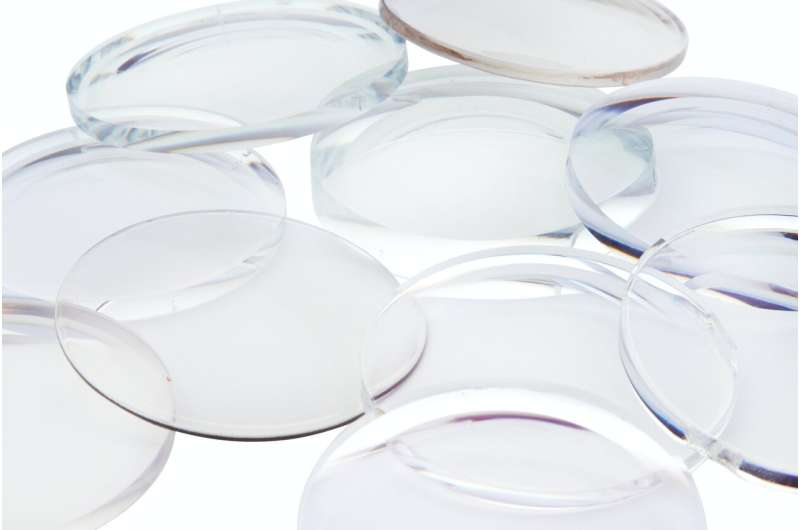
A team of researchers from Purdue University and the University of Michigan, both in the U.S., working with colleagues from Hanyang University, Hongik University and the Kumoh National Institute of Technology, all in the Republic of Korea, has developed a type of contact lens with embedded nanoneedles for treating eye diseases. In their paper published in the journal Science Advances, the group describes how they made their contact lens and how well it worked when tested on rabbits.
Current methods of delivering medications to the eye involve therapies that are applied directly to the outer eye or are injected into it. Neither method is optimal—applied medicines do not penetrate deep enough into the eye and injected medicines are painful and often lead to inflammation. In this new effort, the researchers have come up with a new approach—application of a nanoneedle infused contact lens.
The researchers began with the notion of imbedding nanoneedles into the eye that degrade over time, releasing medication—and the nanoneedles would be so small that they would not cause pain or discomfort. To get the nanoneedles into the eye, they would attach them to a contact lens that would dissolve soon after application to the eye.
The researchers began with the nanoneedles—they grew them using a silicon base, which ensured they would take a long time to dissolve in the eye. They also made them very small—10 times smaller than any that had been tried before. They also developed a unique way to make them, it involved growing the nanoneedles from a silicon and medication mix, then applying a polymer layer to crack them where they joined the silicon base. This involved coating the tiny needles with polymethyl methacrylate. Then the polymer was peeled off the wafer base. The researchers next coated the base of the nanoneedles with another polymer and then removed the first layer. That left the needles embedded in the second polymer material. Once the design was confirmed, the researchers repeated the process in a way that resulted in the base being formed into a contact-lens shape. The final step involved adding a second medication to the lens—one that would be applied to the eye all-at-once as the base dissolved.
The researchers tested their product on rabbit-models and found an almost complete reduction in corneal neovascularization after just 28 days. The group notes that much more work will need to be done before their nanoneedle-based therapy could be used to treat human patients. It will first have to be tested both for efficacy and safety, and also a means for storing the lens once created will need to be developed.
https://youtube.com/watch?v=0lfMy_8TR64
https://youtube.com/watch?v=0lfMy_8TR64%3Fcolor%3Dwhite
Source: Read Full Article